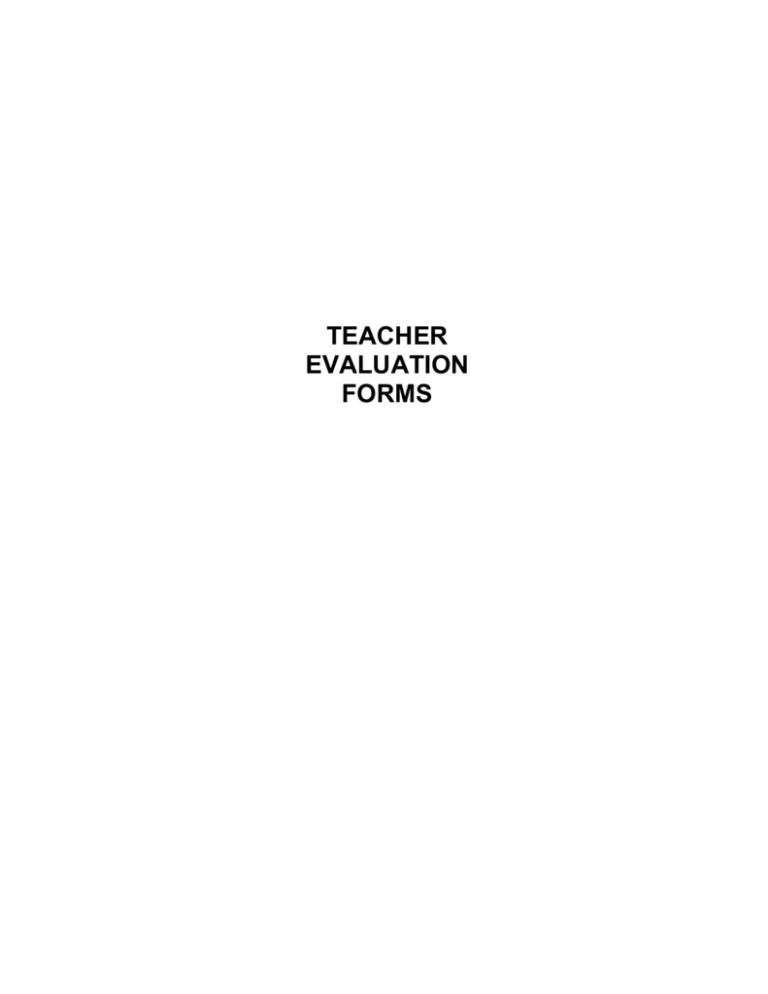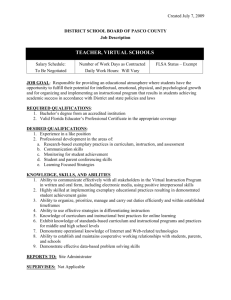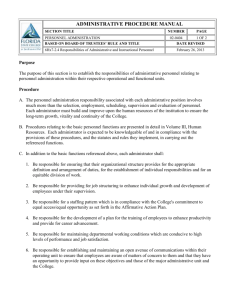TIER I - Northeast Hamilton CSD
advertisement

TEACHER EVALUATION FORMS PRE-OBSERVATION FORM Name School/Administrator Date of Pre-Conference Date/Time of Observation Grade level/Curriculum Area Observed 1. Briefly describe the students in this class, including those with special needs. 4. How do you plan to engage students in the content? What will you do? What will the students do? 2. What are the goals for the lesson? What do you want the student to learn? 5. What difficulties do students typically experience in this area, and how do you plan to anticipate these difficulties? 3. How do these goals support the District’s curriculum? 6. What instructional materials or other resources, if any will you use? (Attach sample materials you will be using in the lesson.) 7. How do you plan to assess student achievement of the goals? What procedures will you use: (Attach any tests or performance tasks, with rubrics or scoring guides.) 8. What Iowa teaching standards/criteria will be demonstrated in this observation? Teacher comments pertaining to observation setting: List any items you might want to call to the attention of the administrator. OBSERVATION REFLECTION FORM Name School Grade/Subject Observation Date Time Post conference Date Time 1. As I reflect on the lesson, to what extent were students productively engaged? 2. Did the students learn what I intended? Were my instructional goals met? How do I know? 3. Did I alter my goals or instructional plan as I taught the lesson? If so, why? 4. If I had the opportunity to teach this lesson again to this same group of students, what would I do differently? Why? 5. Provide several samples of student work related to this lesson. The samples should reflect the full range of student ability in your class and include the feedback you provide to students on their papers. 6. List the Iowa Teaching Standards/Criteria that were related to this lesson. Teacher’s signature/date Administrator’s signature/date PROFESSIONAL DEVELOPMENT PORTFOLIO SUGGESTIONS I. Planning and Preparation: Lesson/Unit Plans Long Range Plans Assessment Plan Grading Plan/Grade Book Discipline Plan Substitute Plans Analysis of Student Performance Data Classroom assessments II. Classroom Environment: Affective Domain (self-esteem, incentives, rewards, projects, etc.) Physical Layout (rationale) Seating Arrangement (rationale) Group Building Strategies Cooperative Learning Classroom Rules/Routine Management Forms Bulletin Boards (interactive, instructional, effective) Homework Plan III. Instruction: Units of Study/Thematic Units Literature/Book Lists Extension/Enrichment Activities Review/Reinforcement Activities Modifications/Differentiations for Special Needs Flexible Grouping Plans Instructional Sequence (samples from whole lesson sequence-planning through culmination Completed Student Work Samples (with evidence of individually specific teacher feedback) Homework Assignments and Guides Technology Links (multimedia, laser disc, internet, etc.) Curriculum Integration Efforts Videotaping of Instruction/Photo Chronology of Unit Sequence - Implementation data, evidence of classroom application of the skills learned in professional development - Completed analysis of student achievement data used for instructional planning IV. Personal and Professional Responsibilities: Professional Involvement (District Committees, School Committees, Professional Organizations, Community Projects) Research to Practice (Professional Reading, Journals) Team/Grade Level (Group Planning Notes) Parent Communication (notes, letters, home calls, surveys, forms, etc.) Course work, Conferences, Workshops, Presentations, meetings Attendance Collegiality Evidence of collaborative planning, classroom observations











